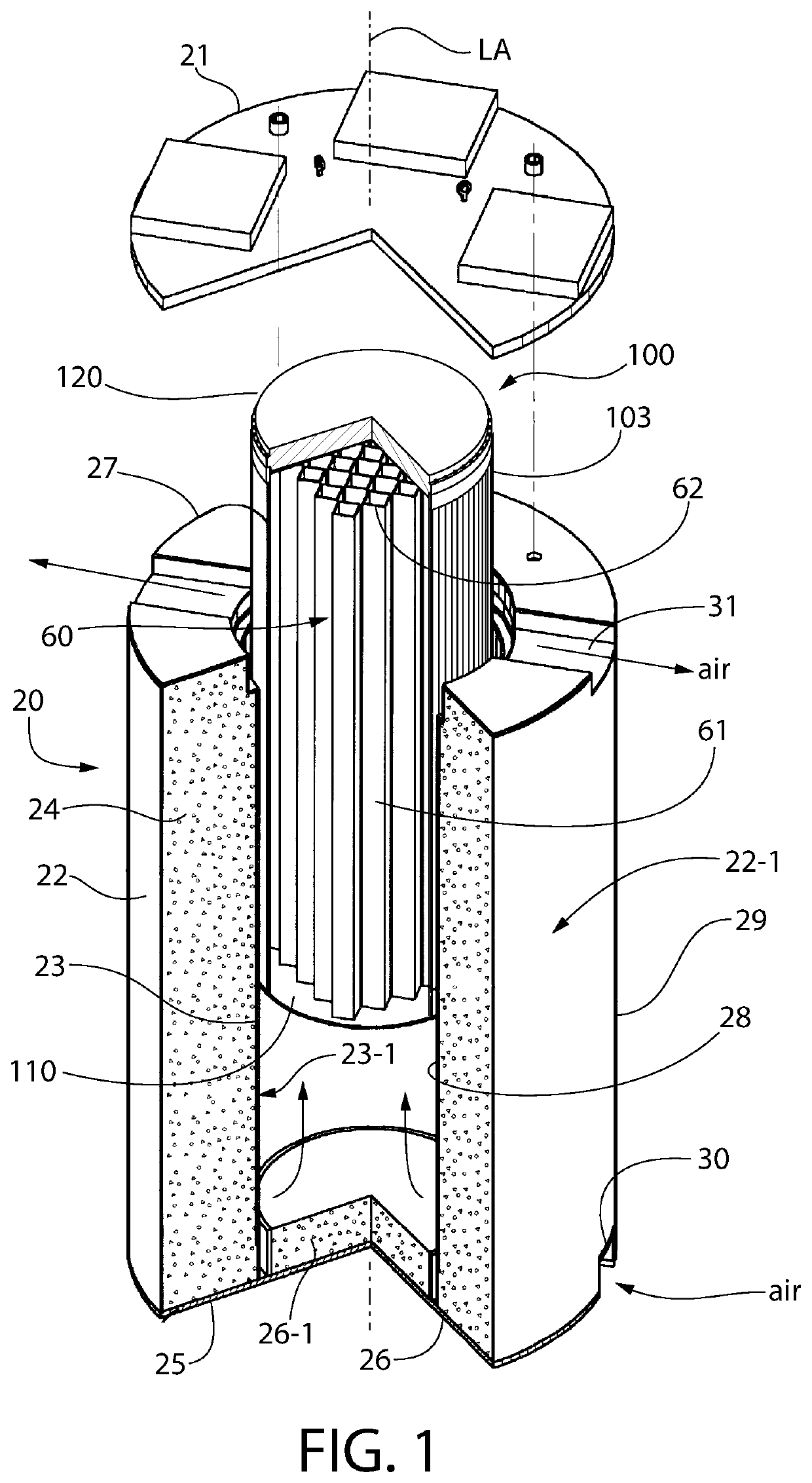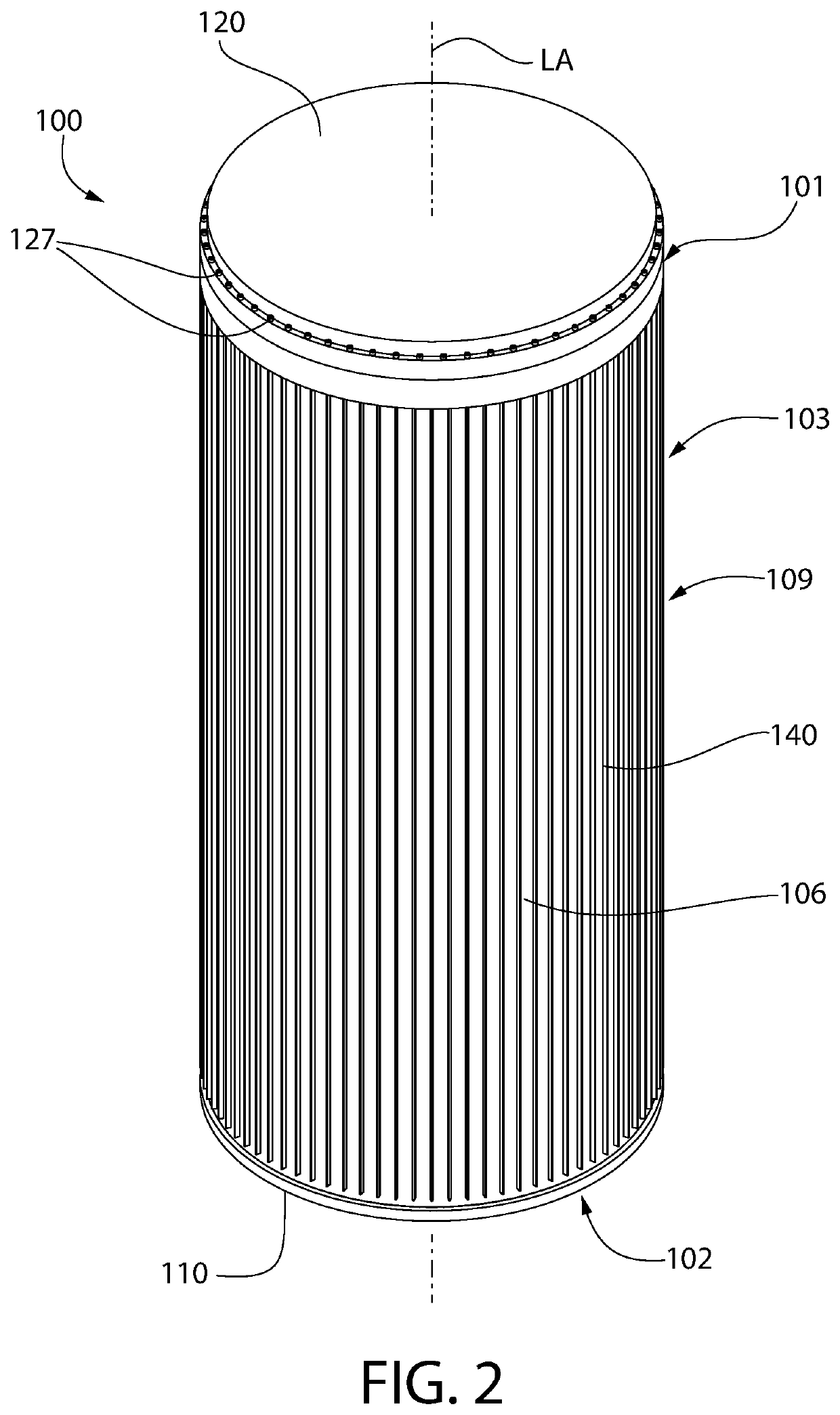Spent nuclear fuel canister
a nuclear fuel and canister technology, applied in the direction of nuclear engineering, portable shielded containers, etc., can solve the problems of insufficient inability to meet the needs of lubricant management, and difficult access to stored fuel, so as to increase the heat rejection capability of canisters, reduce the risk of human effort and radiation exposure, and safeguard the effect of structural integrity
- Summary
- Abstract
- Description
- Claims
- Application Information
AI Technical Summary
Benefits of technology
Problems solved by technology
Method used
Image
Examples
first embodiment
[0051]FIGS. 1-14 depict spent fuel canister 100 with compact bolted lid according to the present disclosure in further detail. The present canister advantageously comprises a bolted joint between the removable top closure lid and the canister body as previously described herein, thereby advantageously providing ready access to the SNF therein for repackaging or other purposes. The bolted lid joint is further described in the discussion which follows.
[0052]Canister 100 includes an elongated cylindrical body 103 comprising a single shell 106 including an open top 101, an open bottom 102, and sidewall 109 extending therebetween along a vertical longitudinal axis LA of the canister. Axis LA coincides with the geometric vertical centerline of the canister. Canister 100 further includes a bottom baseplate 110 and a top closure lid 120. Shell 106 may be of monolithic unitary structure in one embodiment formed of a single material.
[0053]Shell 106 further includes an inner surface 107 and op...
second embodiment
[0076]FIGS. 15-25 depict a spent nuclear fuel (SNF) canister 200 with compact bolted lid according to the present disclosure in further detail. SNF canister 200 is similar to canister 100. Similar parts will not be described in detail or numbered in the figures for the sake of brevity. There are some notable differences in design. For example, the shell 206 of canister 200 is substantially similar to shell 106 of canister 100 with exception that is does not have a step-shaped outer surface with annular recess. Instead, the inner surface of the shell is step shaped as further described below. In addition, canister 200 may be finless as shown, or alternatively may be equipped with external cooling fins if heat emitted by the SNF is considerable. Top closure lid 220 has a different configuration than lid 120 of canister 100; however, it retains the small profile bolted joint to the canister shell as further described below. In addition, lid 220 of canister 200 has a different sealing a...
PUM
 Login to View More
Login to View More Abstract
Description
Claims
Application Information
 Login to View More
Login to View More - R&D
- Intellectual Property
- Life Sciences
- Materials
- Tech Scout
- Unparalleled Data Quality
- Higher Quality Content
- 60% Fewer Hallucinations
Browse by: Latest US Patents, China's latest patents, Technical Efficacy Thesaurus, Application Domain, Technology Topic, Popular Technical Reports.
© 2025 PatSnap. All rights reserved.Legal|Privacy policy|Modern Slavery Act Transparency Statement|Sitemap|About US| Contact US: help@patsnap.com



